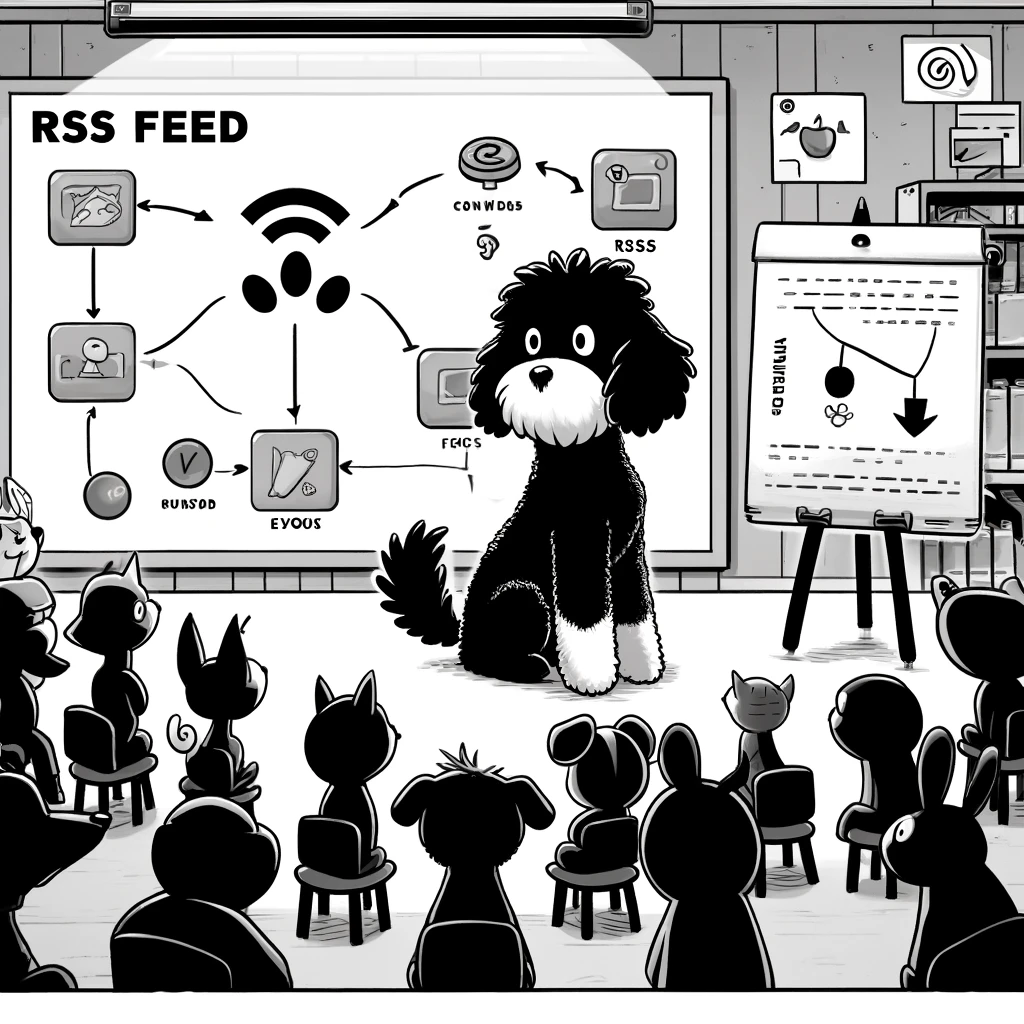Understanding RSS Feeds in WordPress
RSS, which stands for Really Simple Syndication or Rich Site Summary, is a type of web feed that allows users to access updates to online content in a standardized, machine-readable format. WordPress provides built-in support for RSS feeds, enabling users to stay informed about the latest posts without having to visit the WordPress website directly.
WordPress RSS feeds work by publishing updates to your content in an XML document. This standard format ensures compatibility with various feed readers or RSS feed reader applications that aggregate content from multiple sources for easy consumption.
Key Components of WordPress RSS Feeds:
- URL: Each WordPress website has a unique RSS feed URL, which is often linked by an RSS icon.
- Link: The RSS feed link or permalink can be found as a meta tag within the
headsection of the website’s code or through a visible RSS icon on the site. - Tag: Within the XML document, specific tags define the structure of the feed, such as
<channel>,<title>, and<item>among others.
Users typically subscribe to an RSS feed by entering the feed’s URL into a feed reader. Once subscribed, the feed reader checks the site periodically for new content, pulling the updates automatically.
A WordPress RSS feed may include a variety of data including the post title, summary, permalink, and author. Some feeds, known as RSS 2.0 feeds, may also provide media content.
WordPress RSS feeds benefit users by enhancing content visibility and convenience, while also offering SEO advantages by promoting frequent indexing of content updates.
Managing RSS Feeds in WordPress
Managing RSS Feeds in WordPress allows website owners to distribute their content effectively. This section details how to customize feeds, utilize plugins and widgets, and integrate RSS with social media platforms.
Customizing RSS Feeds
WordPress offers various settings for customizing RSS feeds. One can tailor their RSS feeds to include posts from certain categories or authors, as well as control how much content is displayed—just the summary or the full text. To make these adjustments, users should go to the Reading Settings page in the WordPress admin area. For more advanced customizations, such as creating a custom RSS feed or adding custom code, editing the functions.php file or a specific template file within the theme may be necessary.
RSS Feed Plugins and Widgets
To extend functionality, site owners can leverage RSS feed plugins like WP RSS Aggregator or Feedzy RSS Feeds, which offer additional features including multiple feed aggregation, shortcode integration, and RSS feed templates. Widgets like the RSS widget can be added to a sidebar or footer, allowing visitors to subscribe to the feed with ease. Adding these widgets typically involves navigating to Appearance > Widgets in the WordPress dashboard and dragging the RSS widget into the desired area.
Integrating RSS with Social Media
Integrating an RSS feed with social media like Facebook or Twitter can maximize content reach and encourage more engagement. It often involves using plugins or custom code to automatically publish new RSS items to social media profiles. This can streamline content promotion and ensure that followers receive updates quickly. Tools for this integration should emphasize compliance with standards like W3C to ensure broad compatibility and proper feed validation.
Leveraging RSS for WordPress Content Strategy
The effective use of RSS feeds can enhance your WordPress content strategy, providing streamlined delivery of updates and enabling better engagement with your audience.
Increasing Audience Engagement
By setting up RSS feeds on a WordPress website, content creators can promote consistent audience engagement. Subscribers receive the latest posts and updates directly in their RSS reader, encouraging regular interaction. Categories and tags enable readers to subscribe to tailored feeds, ensuring they only receive content that interests them. For instance, an author can provide an RSS feed for a specific category, such as ‘SEO Tips’, to target interested users and keep them engaged with relevant content.











